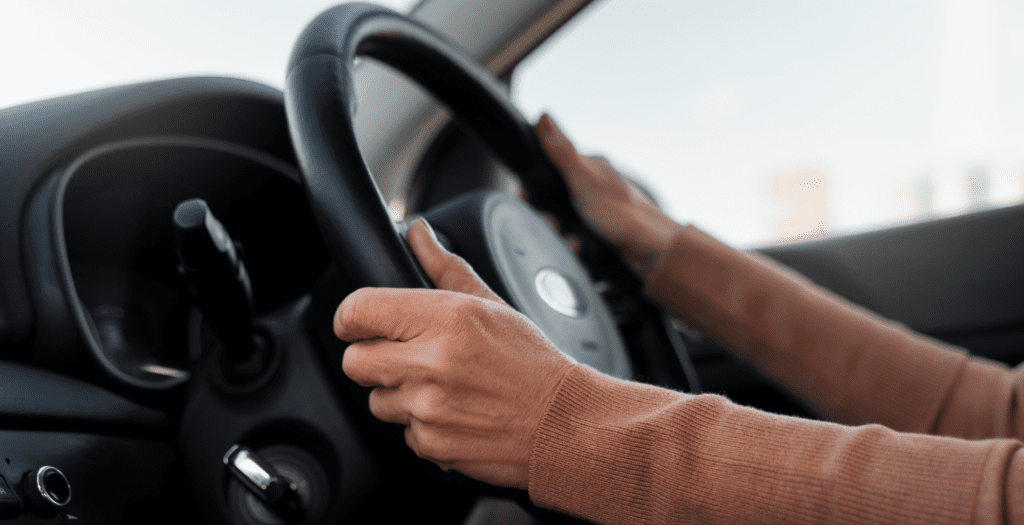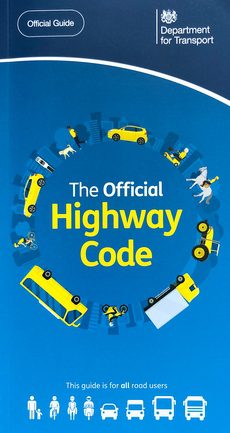
Understanding the Car Horn
The Purpose of a Car Horn
The car horn serves as a critical communication tool on the road, designed primarily to alert others of your vehicle’s presence.
It plays a vital role in maintaining safety and preventing accidents by allowing drivers to warn each other of potential hazards.
Beyond safety, the horn can also be used as a means of signalling to pedestrians or attracting attention in cases of emergency.
A Brief History of the Car Horn
The invention of the car horn dates back to the early days of motoring, evolving from simple mechanical devices to the electronic horns we recognise today.
Initially, hand-operated horns that produced sound by the expulsion of air were common. The development of the car horn mirrors the broader history of automotive innovation, reflecting changes in technology, safety standards, and social attitudes towards driving.
Different Types of Car Horns
There are several different types of car horns, each with its own unique sound and mechanism. The most common include:
- Electric horns, which use an electric current to vibrate a diaphragm and produce sound.
- Air horns, which rely on compressed air to generate a louder and more penetrating sound, often used in larger vehicles like trucks or buses.
- Novelty horns, which play various tunes or sounds and are typically used for personalisation or fun.
Each type of horn has its own application and suitability depending on the vehicle’s size, type, and the driver’s needs.
The Legality of Using Your Car Horn
Understanding the legal framework surrounding the use of car horns is crucial for every driver. The laws governing horn use vary by country and sometimes even by city, reflecting the need to balance safety with noise control.
Legal Uses of the Car Horn
Legally, the primary use of the car horn is for safety purposes. This includes warning other road users of a potential collision, alerting pedestrians when they’re in danger, or signalling in blind corners where visibility is limited.
Some jurisdictions also allow the use of car horns in celebrations, such as weddings or sports victories, although this can be restricted in residential areas.
Common Misuses of the Car Horn
Misuses of the car horn often involve using it as an expression of frustration or anger, such as honking at a driver who has made a minor mistake, or using it to hurry someone.
Other common misuses include unnecessary honking in quiet zones, like hospital areas or late at night in residential areas, which can cause disturbance.
Penalties for Improper Use
Penalties for improper use of the car horn can range from fines to points on the driver’s licence, depending on local laws.
In some areas, excessive or inappropriate honking can be considered a form of noise pollution or even aggressive driving, leading to more severe consequences.
Proper Horn Etiquette
While the legalities provide a framework, horn etiquette ensures that its use is both effective and considerate.
When to Use Your Horn
The horn should be used sparingly and only in situations where it contributes to safety. This includes preventing accidents, alerting someone to a potential danger, or when visibility is poor.
It’s also acceptable to give a light, quick honk as a friendly heads-up when overtaking another vehicle on a highway, as long as it’s done respectfully.
Avoiding Aggressive Honking
Aggressive honking, such as prolonged blasts or honking in anger, is not only considered rude but can also escalate road rage incidents.
Drivers should avoid using the horn to express frustration or impatience. Remember, the horn is a tool for safety, not a medium for communication of personal grievances.
Communicating With Other Road Users
While the car horn is a blunt instrument for communication, it can be used effectively to convey messages in conjunction with other signals like headlights or hazard lights.
A short, gentle honk can alert another driver to your presence, while a quick flash of the headlights might be used to signal permission for another driver to proceed.
Combining these tools thoughtfully can help convey your intentions clearly without causing confusion or alarm.
Safety and the Car Horn
The car horn is more than just a tool for communication; it’s a vital safety feature. Understanding how to use it in accordance with the Highway Code and in various situations can significantly enhance road safety.
The Highway Code rules on using your horn
The Highway Code provides clear guidelines on the proper use of car horns. It stipulates that horns should not be used while stationary on the road, nor should they be used in built-up areas between the hours of 11:30 pm and 7:00 am, except in emergencies.

The Code emphasizes the horn’s role in conveying danger to other road users, rather than as a tool for rebuke or impatience.
Rule 112
The horn. Use only while your vehicle is moving and you need to warn other road users of your presence. Never sound your horn aggressively. You MUST NOT use your horn
- while stationary on the road
- when driving in a built-up area between the hours of 11.30 pm and 7.00 am
except when another road user poses a danger.
Using Your Horn for Accident Prevention
A timely honk can be critical in preventing accidents. For example, using your horn when a driver begins to merge into your lane without noticing your presence can avert a potential side-swipe.
Similarly, a quick beep can alert a driver edging out of a junction who hasn’t seen you. The key is to use the horn briefly and only to prevent an immediate danger.
The Role of the Horn in Emergency Situations
In emergency situations, the car horn can be a lifeline. If you’re unable to avoid an accident, a horn can alert others to the imminent danger, potentially minimizing the impact.
Moreover, if you find yourself in danger – such as being followed or threatened by another vehicle – the horn can draw attention and help from nearby drivers or pedestrians.
Horns and Pedestrian Safety
For pedestrians, especially those who are visually impaired, the sound of a car horn can be a crucial indicator of nearby vehicles.
Using your horn when a pedestrian steps into the road without noticing can save lives. However, it’s important to use the horn gently in such situations to avoid causing panic or distress.
Maintenance and Troubleshooting
To ensure your horn functions reliably when you need it most, regular maintenance and knowing how to address common issues are essential.
Routine Checks for Horn Functionality
Simple routine checks can ensure your horn is always in working order. This includes pressing the horn briefly to test its sound. These checks should be part of your regular vehicle maintenance routine, along with checks for lights, tyre pressure, and fluid levels.
Common Horn Issues and Fixes
Common issues with car horns include a weak or inconsistent sound, the horn sticking and continuously sounding, or the horn not working at all.
These problems can often be traced back to a blown fuse, a faulty relay, or a problem with the horn button.
Simple fixes can involve replacing the fuse or relay, while issues with the horn button might require cleaning or adjustment.
When to Seek Professional Help
If basic troubleshooting doesn’t resolve the issue, it may be time to seek professional help.
This is particularly true for problems within the steering column or wiring, which can be complex and require specialist tools and knowledge.
A professional mechanic can diagnose and fix the issue, ensuring your horn functions correctly and safely.
Honing Your Horn Skills
Developing proficient horn skills involves more than knowing when to press the horn; it’s about understanding the context, the environment, and the impact of its use.
Practising Responsible Horn Use
Responsible horn use is paramount. It begins with self-discipline and an understanding of the horn’s role as a safety device rather than an instrument of expression.
Practising restraint and patience, especially in traffic jams or slow-moving traffic, is essential. Drivers should also consider the impact of their horn use on nearby pedestrians and residents, aiming to minimize unnecessary noise and disturbance.
Recognising Situations for Horn Use
Identifying situations where using your horn is appropriate and beneficial is a critical skill. This includes:
- Preventing Accidents: Alerting drivers who are about to enter your lane without noticing your presence.
- Blind Corners: Using the horn lightly when approaching areas where the view is obstructed.
- Emergency Situations: When you or others are in danger and need to attract immediate attention.
Conversely, understanding situations where horn use is inappropriate, such as expressing frustration or attempting to clear traffic, is equally important.
Frequently asked questions
In most places, using your car horn while stationary is discouraged or outright illegal unless in an emergency situation to alert others of danger.
Yes, if a pedestrian stepping onto the road without noticing presents a danger to themselves or others, a gentle honk can be used to alert them.
A weak horn sound could be due to a faulty fuse, poor electrical connection, or issues with the horn itself. A check-up or replacement might be necessary.
Honking out of frustration or anger can be perceived as aggressive behaviour and could escalate to road rage. It’s best to use the horn only for safety reasons.
Practice using your horn sparingly and only in situations that warrant attention for safety reasons. Avoid using it as a means to express frustration.
Yes, improper use of your car horn, such as in quiet zones or for non-emergency communication, can result in fines or other penalties depending on local laws.
Yes, there are several types, including electric horns, air horns, and novelty horns, each with distinct sounds and uses depending on the vehicle.
Check for simple issues like blown fuses or loose connections. If these aren’t the problem, it’s best to consult a professional mechanic.
While the primary purpose of the horn is for safety, using it briefly to signal a friend in a non-residential area or during a celebration (where legally allowed) can be acceptable, provided it doesn’t disturb others.


